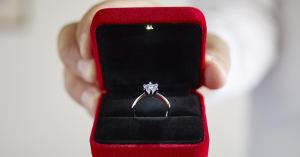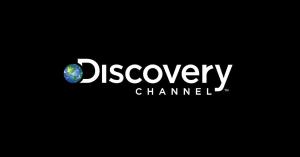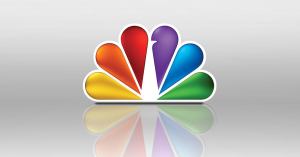Facebook removed advertisements posted by President Donald Trump‘s re-election campaign because it featured an inverted red triangle, the same symbols used by Nazi Germany to identify Communists and members of other opposition parties. Trump’s campaign ad also included text warning of “dangerous mobs of far-left groups” and asked Facebook users to sign a petition about “Anita,” anti-fascist groups the Trump administration has been trying to tie to violence during protests. Facebook said the advertisement violated its policy on hate speech.
The ads were removed “for violating our policy against organized hate,” Facebook spokesman Andy Stone told the Washington Post. “Our policy prohibits using a banned hate group’s symbol to identify political prisoners without the context that condemns or discusses the symbol.” The Nazis used red triangle patches to identify members of opposition parties, similar to the yellow triangles on red triangles used to identify Jewish political prisoners.
Videos by PopCulture.com
The Nazis used red triangles to identify their political victims in concentration camps. Using it to attack political opponents is highly offensive. @POTUS‘ campaign needs to learn its history, as ignorance is no excuse for using Nazi-related symbols. https://t.co/7R7aGLD7kl
— Jonathan Greenblatt (@JGreenblattADL) June 18, 2020
The Trump campaign claimed the red triangle was being used as an Antifa symbol. However, it is not a commonly used logo among anti-fascist groups. Usually, the logo is two flags, one red and another black, inside a circle. The campaign featured the advertisement on Trump’s main Facebook page, the “Team Trump” campaign page, and Vice President Mike Pence’s page. The post on Trump’s page garnered almost 1 million impressions before it was taken down by Facebook Thursday.
Some Nazi symbols have been reclaimed by groups, like the pink triangle once used to label gay inmates. But the red triangle has not been used in the same way. It remains a lesser-known symbol. “I think it’s a highly problematic use of a symbol that the Nazis used to identify their political enemies,” Jacob S. Eder, a historian of modern Germany at the Barenboim–Said Akademie in Berlin, told the Post. He said it was possibly not done on purpose since most Americans are likely unaware of the red triangle’s origins, but he called it “very, very careless, to say the least.”
This is an emoji.🔻
It’s also a symbol widely used by Antifa. It was used in an ad about Antifa.
It is not in the ADL’s Hate Symbols Database. pic.twitter.com/V4fK8QWHKD
— Trump War Room – Text TRUMP to 88022 & get the APP (@TrumpWarRoom) June 18, 2020
Trump’s team defended using the symbol by noting that the Anti-Defamation League did not include it in its database of hate symbols. Still, ADL CEO Jonathan Greenblatt said using it was “offensive and deeply troubling,” and he asked the Trump campaign to familiarize itself with the historical context behind symbols before using them. “Ignorance is not an excuse for appropriating hateful symbols,” Greenblatt told the Post.
Holocaust scholar Deborah E. Lipstadt compared the Trump campaign’s use of the symbol to its earlier decision to schedule a campaign rally in Tulsa, Oklahoma on June 19, which is marked as Juneteenth, a celebration for the end of slavery. The rally will still take place in Tulsa, the site of a 1921 massacre where hundreds of Black people were killed, but it was rescheduled for Saturday.








